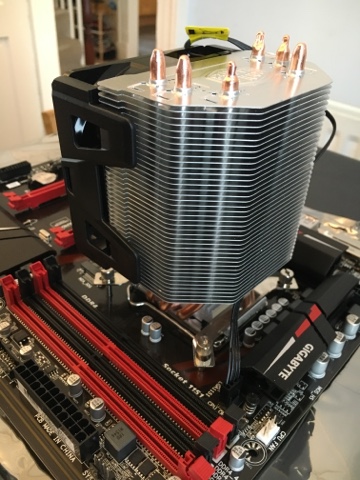I bought £500 of bits from scan and will blog here the experience, mostly as a record to myself, but someone may be interested. The base is. 6600K i5 in a Gigabyte GA-Z170 Mobo. That chip overclocks, which I'll get to at setup time.
I've not built a PC for a while and things have certainly moved on. This baby is covered in heat sinks, and sports all the latest interfaces - USB3.1, HDMI, DVI, gigabit networking, and so on. I've decided to mount the PCI and memory to the board prior to putting the board in the case.
I also bought some thermal paste. In the old days you could cook CPUs of you didn't make sure they were cool enough. These days they "step down" which just means poor performance. The Arctic
Paste helps make a really good conductive bridge between the CPU and the heatsink.
So, first, drop the country in. Earth yourself first or get a strap, then line the CPU up. It's keyed and can only go in one way. There are two notches on opposite sides of the chip which correspond to two notches on the board.
In the old days the pins were on the CPU and there was a corner missing which lined up with a keyed socket on the Mobo, but things change.
Now the next bit terrifies me. Look at this cooler master hyper 103...
Fitting varies on the chip you bought. I bought a socket 1151 so follow the Intel instructions. It comes with a base that goes under the board and then two mounting brackets you screw to the heatsink, which in turn screw through the board to that base.
I did all that and tested it dry before putting the paste on.

So, once you've screwed it down...
Then it's a case of clipping the fan back on and plugging in the Mobo connector.
So the memory pops in easily enough. I went for some nice red Corsair Vengeance chips. A matched pair is quicker than in one stick.
Now, onto the case. This machine will be sat in the living room so I wanted a more Hifi look than PC look.
Once it's all there it's time to PXEBoot Windows on there (didn't install a cd drive) and we're done.
I didn't realize there would be a gaping hole where the cd normally is. I expected a blanking plate. Hey ho!










